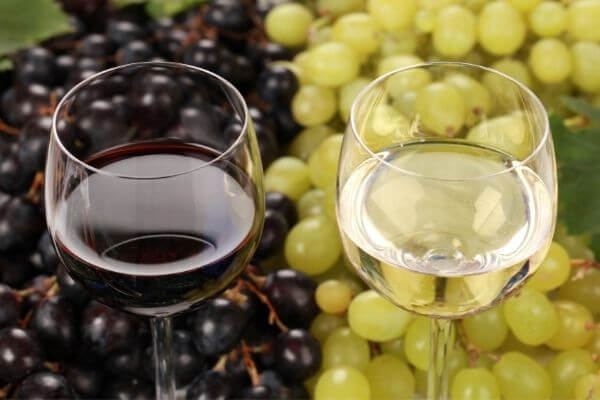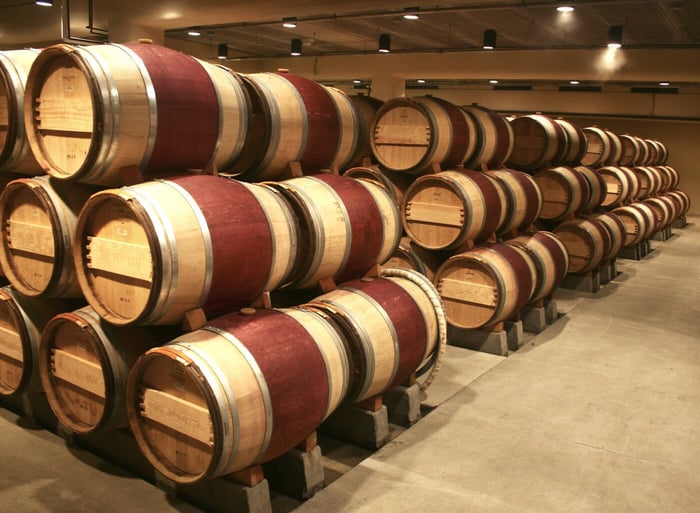Unveiling the Differences
When it comes to wine, the world of flavors, aromas, and colors is vast and intriguing. Among the various wine categories, white and red wines hold a special place, each offering distinct characteristics and experiences. White Wine vs. Red Wine, aside from color, what's the difference? Let’s explore the key differences between white and red wine, shedding light on their production methods, flavor profiles, and ideal food pairings. So, grab a glass and join us on this delightful journey through the realms of white and red wines.
Production Process

White Wine: White wine is made from the juice of white or light-colored grapes. After harvest, the grapes are gently pressed, separating the juice from the skins, seeds, and solids. The juice is then fermented at cool temperatures, preserving its natural acidity and delicate flavors. This process results in wines that are typically light, crisp, and refreshing.
Red Wine: Red wine, on the other hand, is crafted using red or black grapes. The grapes are crushed, including the skins, seeds, and solids, which contribute to the wine's color, tannins, and flavors. The mixture undergoes fermentation, during which the grape skins interact with the juice, extracting color, tannins, and other compounds. The resulting wines are generally fuller-bodied, richer, and more complex than their white counterparts.
Flavor Profiles
White Wine: White wines offer an array of flavors ranging from zesty citrus and tropical fruits to floral notes and minerality. Common varietals include Chardonnay, Sauvignon Blanc, Riesling, and Pinot Grigio. They are often described as light, crisp, and refreshing, with a tendency towards acidity. Some white wines can exhibit buttery or creamy textures, depending on factors such as oak aging and winemaking techniques.
Red Wine: Red wines encompass a broad spectrum of flavors, from red and black fruits like cherry, plum, and blackberry to earthy tones, spices, and hints of chocolate or tobacco. Popular red wine varietals include Cabernet Sauvignon, Merlot, Pinot Noir, and Syrah. These wines typically have more body, higher tannins, and deeper complexities. Ageing red wines can enhance their flavors, allowing them to develop more nuanced characteristics over time.
Ideal Food Pairings

White Wine: White wines excel in pairing with lighter fare, seafood, poultry, and creamy dishes. For example, a crisp Sauvignon Blanc pairs wonderfully with fresh salads, grilled fish, or goat cheese. Richer white wines like oaked Chardonnay can complement buttery lobster, roasted chicken, or creamy pasta dishes. The acidity and vibrant flavors of white wines help cut through richness and refresh the palate.
Red Wine: Red wines shine alongside heartier dishes, red meats, game, and aged cheeses. A robust Cabernet Sauvignon can stand up to a juicy steak, while a Pinot Noir complements roasted duck or grilled salmon. Merlot pairs well with pasta dishes, while a Syrah or Shiraz can enhance the flavors of spicy cuisine or barbecued meats. The tannins and fuller body of red wines provide structure and depth to match bold flavors.
White and red wines offer distinct experiences that cater to different palates and occasions. White wines are known for their refreshing nature, vibrant acidity, and fruity profiles, making them excellent choices for lighter meals and warm weather. On the other hand, red wines impress with their fuller body, complex flavors, and ability to elevate heartier dishes. Understanding the differences between white and red wine allows us to appreciate their unique characteristics and make informed choices when it comes to selecting the perfect wine for any occasion.
Remember, whether you're a fan of white or red, exploring the diverse world of wines is a delightful adventure, with endless opportunities to savor and discover new flavors.




